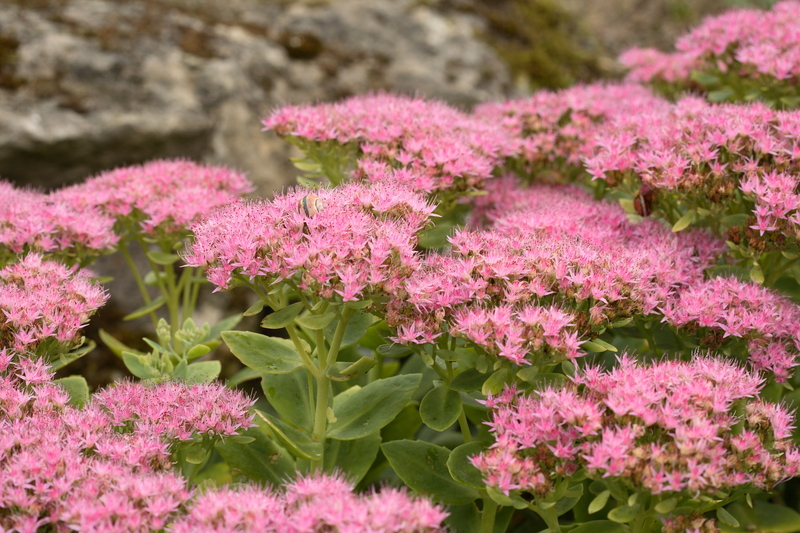First Steps in Revitalizing a Neglected Garden
Posted on 14/09/2025
First Steps in Revitalizing a Neglected Garden
If you have a neglected garden, you're not alone. Many homeowners inherit overgrown, uninspiring plots that seem daunting at first glance. Yet, restoring an abandoned or forgotten garden can transform your outdoor space into a vibrant oasis. Revitalizing a neglected garden is a journey of discovery, learning, and creativity. In this comprehensive guide, you'll find all the essential steps to breathe new life into your green space--even if it has seen better days!

Assessing Your Neglected Garden: Where to Begin
The secret to rejuvenating a neglected garden is starting with a thorough assessment. Before you buy new plants or start digging, pause to understand what you already have. Here's how to survey your garden's current state:
- Walk the Garden: Stroll through your space and take notes on what's thriving, what's struggling, and what's completely overgrown.
- Identify Trees, Shrubs, and Perennials: Some might just need pruning, while others may be invaders you'll have to remove.
- Look for Wildlife: Birds, insects, and pollinators may already call your garden home--note their presence for future-friendly planning.
- Check the Soil: Is it compacted and lifeless, or rich and dark? Soil condition will dramatically impact your next steps.
- Examine Sunlight and Shade Patterns: Notice where sunlight falls at different times, as this will affect plant choices.
Why Documenting the Current State is Essential
Photographs and sketches are invaluable at this stage. They help you visualize potential changes and track your progress as you restore your garden. Reviving a neglected yard is a rewarding process, but it also takes time--and good records will keep you motivated!
Planning for Garden Rehabilitation: Setting Your Vision
Once you have a clear idea of what you're working with, it's time to dream a little. Ask yourself:
- How do you want to use your garden? For entertaining, relaxing, growing food, or supporting local wildlife?
- What is your preferred garden style? Low-maintenance, cottage, formal, or naturalistic?
- What is your time and budget? Be honest--reviving neglected gardens can be affordable, but planning helps avoid disappointment.
With these answers in mind, sketch a simple garden plan. This could be rough, but it gives you direction for clearing, planting, and future care. Remember, it's okay to start small--the key is to make steady progress.
Setting Realistic Goals
Neglected garden restoration is a process, not a weekend project. Divide your plan into manageable phases: initial cleanup, soil improvement, planting, and ongoing maintenance. Celebrate each milestone!
Clearing and Cleaning: The Foundation of Revitalization
Before you can create new beauty, you need a clean slate. Clearing a neglected garden involves:
- Removing Large Debris: Old pots, broken furniture, and rubbish should go first.
- Tackling Weeds and Overgrowth: Pull up or cut back unwanted growth, being sure to remove roots where possible to prevent regrowth.
- Pruning Existing Plants: Some shrubs and trees may just need a hard prune to spring back to life.
Tip: Work in sections. Restoring long-neglected gardens can feel overwhelming. Focus on one area at a time to make visible progress and keep motivation high.
Dealing with Invasive Plants
Many neglected gardens harbor invasive species. Identify and eradicate invaders using appropriate techniques--sometimes manual removal is enough; other times, you may need professional advice, especially with persistent weeds like bindweed or Japanese knotweed.
Soil Health: The Unsung Hero
Healthy garden soil is the backbone of any lush landscape. Years of neglect often leave soil compacted, depleted, and low in organic matter. Here's how to revive it:
- Remove Weeds and Roots: Get rid of as much unwanted organic material as possible.
- Test Your Soil: Use a simple soil test kit to check pH, texture, and fertility.
- Loosen the Soil: Use a fork or broadfork to break up compacted areas, improving drainage and root growth.
- Add Organic Matter: Compost, well-rotted manure, or leaf mold will replenish nutrients and support beneficial microbes.
- Mulch: An organic mulch suppresses weeds, keeps soil moist, and continues to improve quality over time.
Prioritizing soil improvement is the best investment you can make in any revitalization project for a neglected yard.
Salvaging and Reclaiming Existing Plants
With the garden cleared, turn your attention to "survivors"--plants that have weathered neglect. Many well-established shrubs and perennials bounce back with a little care.
- Prune Dead or Damaged Growth: Use sharp, clean tools and cut at an angle just above a healthy bud.
- Feed and Water: Apply a gentle organic fertilizer and deep water if conditions are dry.
- Divide Perennials: Some overcrowded clumps benefit from division; this gives you free new plants for other bare patches!
Tip: Don't be too quick to remove "lost cause" plants; wait a season to see if new growth appears, especially with trees and large shrubs.
Fresh Planting: Introducing Color and Interest
Now comes the creative part: replanting a neglected garden with resilient, beautiful selections. Start small and expand as your confidence grows.
Choosing the Right Plants for Your Garden
- Match plants to conditions: Pick varieties suited to your garden's sun, shade, and soil.
- Favor tough, low-maintenance species: Especially in areas that were previously choked with weeds.
- Think in layers: Combine ground covers, perennials, shrubs, and trees for year-round interest and easier weed control.
Incorporate native plants where possible--they're adapted to local climate and support pollinators. Remember, reviving an overgrown garden is as much about patience as instant impact; new beds will fill in over time.
Maintaining Momentum: Ongoing Care and Garden Rehabilitation
Revitalizing a neglected backyard isn't "one and done." A successful transformation relies on follow-through:
- Keep Mulching and Feeding: Organic mulch and regular compost boosts soil and keeps weeds at bay.
- Water Wisely: Deep, infrequent watering encourages deep-rooted, resilient plants.
- Tackle Weeds Early: Pull or hoe them out before they set seed.
- Prune Seasonally: Shape shrubs and trees annually to encourage healthy growth.
- Observe and Adjust: Be flexible--if something isn't thriving, don't be afraid to try a new plant next year.
Create a simple maintenance calendar to keep tasks manageable. Consistency now means your restored garden won't slip back into neglect.
Common Challenges in Garden Restoration--And How to Overcome Them
Restoring neglected gardens can be immensely rewarding, but there are a few pitfalls to avoid:
- Feeling Overwhelmed: Break tasks into small pieces, and ask for help from friends, family, or local gardening clubs.
- Impatience: Good gardens take time. Celebrate each small win!
- Poor Soil Issues: Ongoing mulching and compost make a huge difference, but don't hesitate to bring in topsoil for extremely depleted patches.
- Pest Issues: Healthy, diverse gardens attract helpful predators, but monitor for outbreaks and use organic solutions when possible.
- Balancing Design with Nature: Allow room for wildness and "happy accidents"--sometimes the best plants are those that self-seed or pop up unexpectedly!
Inspiring Success Stories: Before and After a Garden Revival
Many enthusiastic gardeners have transformed wastelands into thriving environments. From urban lots filled with brambles to country gardens abandoned for years, the common denominator is a willingness to embrace slow progress and celebrate each milestone.
Consider sharing your own before-and-after photos with the gardening community--it's a rewarding way to document your journey and inspire others to begin reviving their own neglected gardens.

Tools and Resources for Reviving a Neglected Garden
- Basic Tools: Spade, fork, rake, hand trowel, loppers, and pruning shears.
- Mulch and Compost: Purchase or create your own organic matter for soil improvement.
- Reference Books and Websites: Look for guides specific to your climate and region.
- Local Extension Services: They can help with soil testing and plant recommendations.
- Garden Clubs and Workshops: A great way to meet other garden restorers and swap tips or plants.
Conclusion: Your Garden's Next Chapter Awaits
Restoring a neglected garden may seem daunting, but each task--no matter how small--brings you closer to a vibrant and inviting space. Whether your goal is to create a pollinator haven, a productive vegetable patch, or a haven for relaxation, the first steps in revitalizing your neglected garden set the tone for years of enjoyment ahead.
Remember: Start small, keep going, and enjoy every stage of the transformation. Your neglected garden is not just a project--it's an opportunity to nurture life, beauty, and a little wildness right at your doorstep.
Are you ready to begin revitalizing your neglected garden today? With the strategies outlined above, you'll be well on your way to a flourishing and inspiring outdoor sanctuary!



